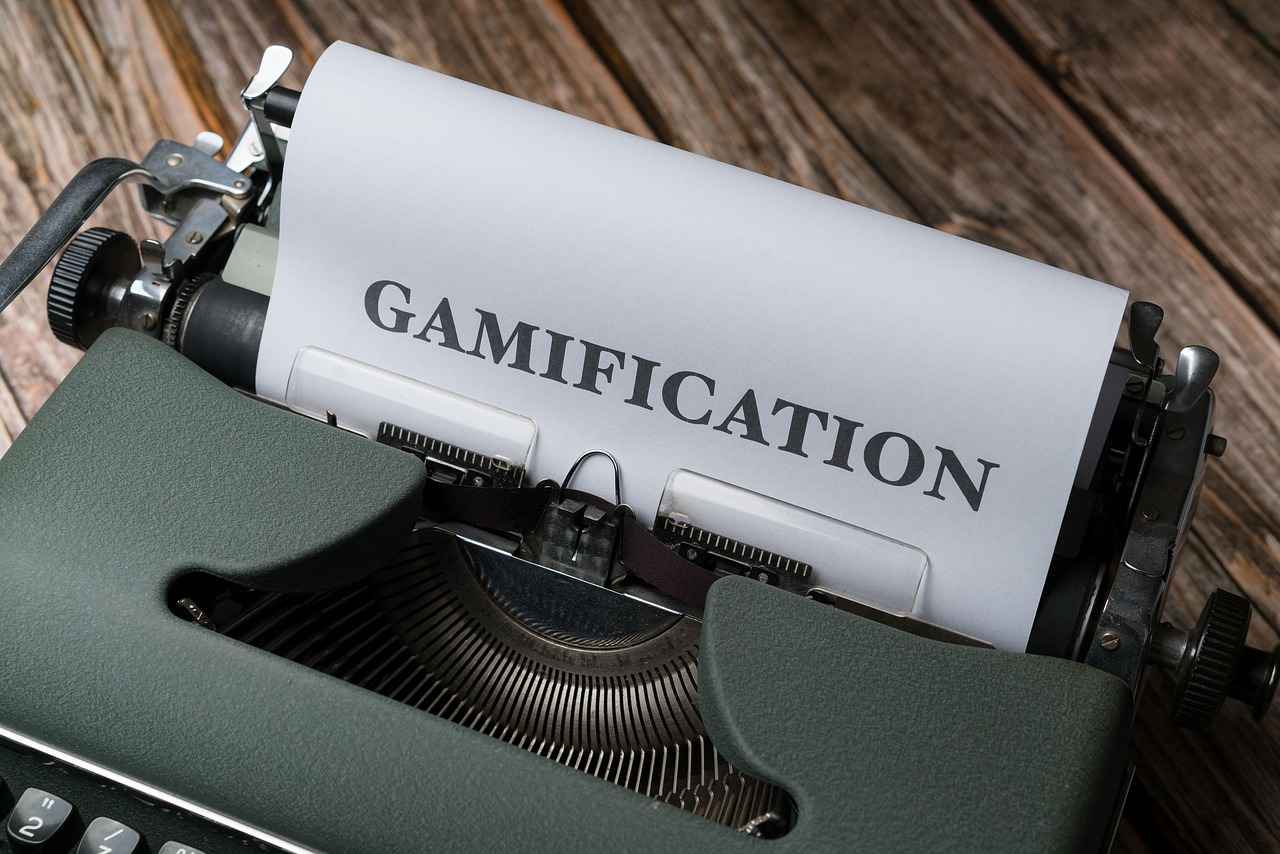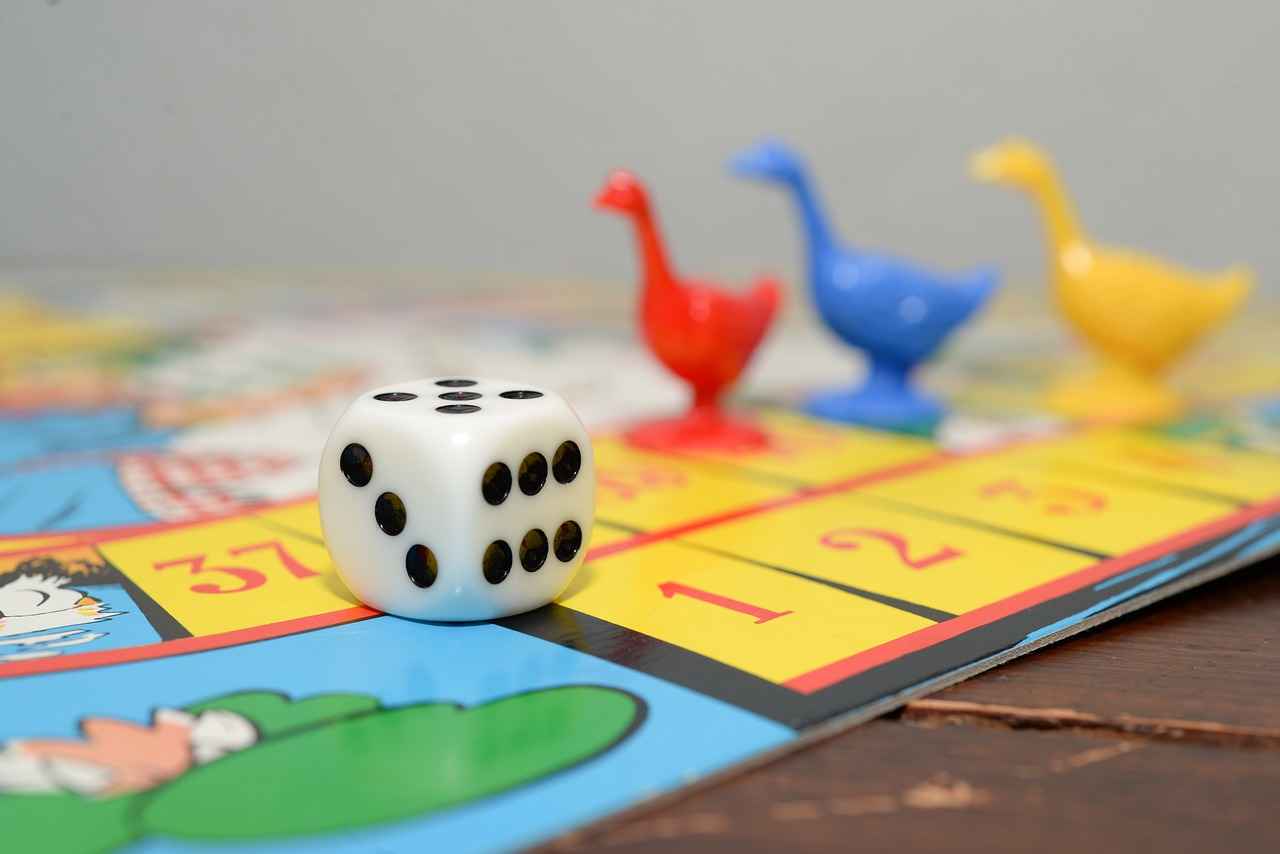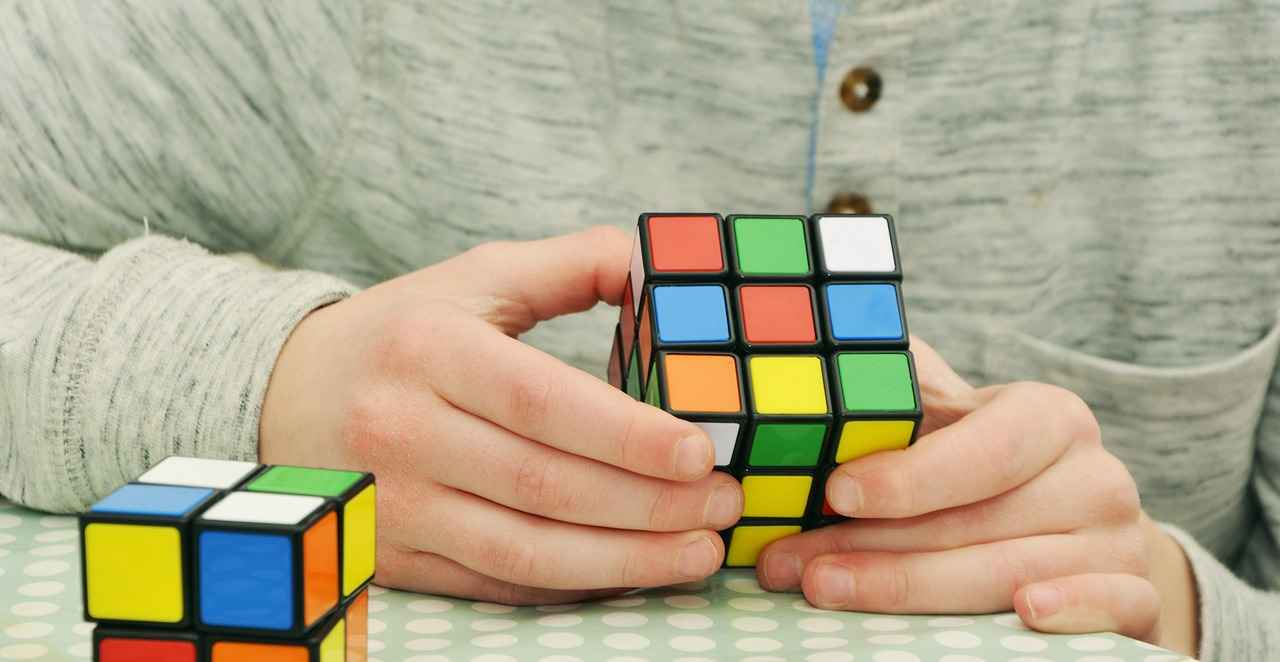In this article, we will explore how to effectively create and manage games on Blooket, a popular educational platform. We’ll cover everything from setup to gameplay strategies.
What is Blooket?
Blooket is an innovative educational tool that allows teachers and students to create engaging learning games. It combines elements of trivia, quizzes, and interactive gameplay to enhance the educational experience. With its user-friendly interface, Blooket makes learning fun and competitive, encouraging students to actively participate in their education.
How to Sign Up for Blooket
Creating a Blooket account is straightforward. Users can sign up for free, gaining access to a plethora of features and game types tailored for educational purposes. The registration process requires basic information, and once completed, users can immediately start exploring the platform’s capabilities.
Creating Your First Game on Blooket
Once registered, users can easily create their first game by selecting a game mode and adding questions. This process is intuitive and designed for educators of all tech levels. Blooket offers a range of templates to help users get started quickly.
- Selecting a Game Mode: Blooket offers various game modes, such as Tower Defense and Crypto Hack. Each mode provides unique gameplay experiences that can cater to different learning styles and preferences.
- Adding Questions to Your Game: After selecting a game mode, users can input questions. Blooket allows for multiple-choice questions, true/false, and even image-based queries to enhance engagement.
Customizing Game Settings
Customization is key in Blooket. Educators can adjust game settings, including time limits, question randomization, and player options, to suit their classroom needs. This flexibility ensures that games can be tailored for various learning objectives and student abilities.
- Setting Time Limits: Time limits can be set for each question to create a sense of urgency and competition among players, enhancing engagement and learning outcomes.
- Randomizing Questions: Randomization of questions ensures that no two games are the same, providing a fresh experience for returning players and promoting better retention of knowledge.
Managing Your Blooket Games
Once a game is created, managing it effectively is crucial for maximizing its educational value. This includes monitoring player progress and game performance. Blooket provides real-time analytics that allow hosts to track player performance, informing future lesson plans and identifying areas where students may need additional support.
- Adjusting Game Difficulty: Hosts can adjust the difficulty of games based on player performance, ensuring that all participants are challenged appropriately and can learn at their own pace.
Engaging Students with Blooket
Blooket is designed to engage students through gamification. By leveraging competition and interactive elements, educators can create a more dynamic learning environment. Team-based gameplay encourages collaboration among students, fostering a sense of community and teamwork while enhancing the learning experience.
- Utilizing Rewards and Incentives: Implementing rewards, such as points or badges, can motivate students to participate actively and strive for improvement, making learning more enjoyable.
Integrating Blooket into Curriculum
Blooket can be integrated seamlessly into various subjects and curricula, providing a versatile tool for educators looking to enhance their teaching methods. Creating subject-specific games allows educators to target specific learning objectives, making Blooket a valuable resource for subjects ranging from math to history.
- Cross-Curricular Applications: Blooket’s flexibility enables cross-curricular applications, allowing teachers to create games that incorporate multiple subjects, promoting a holistic educational approach.
Best Practices for Hosting Blooket Games
To maximize the effectiveness of Blooket games, hosts should follow best practices that enhance both gameplay and learning outcomes for students. Preparing students by explaining the rules and objectives can help them understand what is expected and how to succeed.
- Encouraging Participation: Encouraging all students to participate, regardless of their confidence levels, can help create a more inclusive environment and improve overall engagement with the material.
Feedback and Improvement
Gathering feedback from students and analyzing game results can provide valuable insights for improving future Blooket games and enhancing the overall educational experience. Conducting post-game discussions allows educators to review questions and answers with students, reinforcing learning and addressing any misconceptions that may have arisen during gameplay.
- Iterating on Game Design: Using feedback to iterate on game design can lead to more effective and engaging games, ensuring that Blooket remains a dynamic tool in the educator’s toolkit.

What is Blooket?
Blooket is revolutionizing the way educators engage students through interactive learning experiences. This innovative platform empowers teachers and students alike to create dynamic games that blend educational content with the excitement of gameplay. By incorporating elements of trivia, quizzes, and competitive play, Blooket enhances the learning process, making it not only effective but also enjoyable.
At its core, Blooket allows users to design custom games tailored to specific learning objectives. This flexibility means that whether you’re teaching math, science, history, or language arts, Blooket can be adapted to meet your classroom needs. The platform includes various game modes, each offering unique mechanics that cater to different learning styles. For instance, modes like Tower Defense challenge students to protect their tower by answering questions correctly, while Crypto Hack engages them in a fast-paced race to solve problems and earn points.
One of the standout features of Blooket is its user-friendly interface. Teachers can create games in just a few simple steps, making it accessible for educators of all technical backgrounds. After signing up for a free account, users can dive right into game creation by selecting a game mode and adding custom questions. The platform supports a variety of question types, including multiple-choice, true/false, and image-based options, which enhances engagement and caters to diverse learning preferences.
Moreover, Blooket’s emphasis on gamification transforms traditional learning into an interactive experience. By incorporating elements of competition and teamwork, students are motivated to participate actively in their learning journey. The platform encourages collaboration through team-based play, fostering a sense of community among students while also making learning more enjoyable.
In addition to its engaging gameplay, Blooket provides teachers with valuable analytics to monitor student progress. Real-time data allows educators to assess which concepts students grasp well and which areas may require further attention. This feedback loop is crucial for tailoring instruction to meet students’ needs effectively.
As educators seek to integrate technology into their curricula, Blooket stands out as a versatile and effective tool. By allowing teachers to create subject-specific games, Blooket helps target specific learning objectives, ensuring that educational content is not only relevant but also impactful. Furthermore, its capacity for cross-curricular applications enables teachers to design games that incorporate multiple subjects, promoting a holistic educational approach.
In summary, Blooket is more than just a game; it is a comprehensive educational tool that enhances the learning experience through interactive gameplay. With its user-friendly design and diverse game modes, it empowers educators to create engaging content that captivates students’ attention and fosters a love for learning.

How to Sign Up for Blooket
In the digital age, educational platforms are transforming the way teachers and students interact with learning materials. One such platform is Blooket, known for its engaging and interactive games that make learning enjoyable. In this section, we will delve into the process of signing up for Blooket, highlighting its benefits and features that cater to educators and students alike.
Creating a Blooket account is a simple and user-friendly process that opens the door to a multitude of educational resources. Here’s a step-by-step guide to help you get started:
- Visit the Blooket Website: Navigate to the official Blooket website using your preferred web browser.
- Click on the Sign-Up Button: On the homepage, look for the “Sign Up” button, typically located at the top right corner of the page.
- Choose Your Account Type: You can sign up as a teacher or a student. This selection will tailor the features available to you.
- Fill Out the Registration Form: Provide the required information, such as your email address, a secure password, and any other necessary details. Make sure to use a valid email address, as you may need to verify it later.
- Agree to Terms and Conditions: Read through Blooket’s terms and conditions, and check the box to agree to them.
- Complete the Registration: Click on the “Sign Up” button to finalize your account creation. You may receive a confirmation email; follow the instructions to verify your account.
Once your account is set up, you can explore the various features Blooket offers. Users gain access to a wide range of educational games, quizzes, and customizable options that enhance the learning experience.
Benefits of Signing Up for Blooket
- Access to Diverse Game Types: Blooket offers multiple game formats, including trivia, flashcards, and interactive challenges, making learning more engaging.
- Customizable Learning Experience: Educators can create personalized quizzes tailored to their curriculum, allowing for targeted learning objectives.
- Real-Time Analytics: Blooket provides valuable insights into student performance, enabling teachers to adjust their teaching strategies based on real-time feedback.
- Collaboration Opportunities: Students can work together in teams, fostering collaboration and enhancing social learning.
In summary, signing up for Blooket is a straightforward process that unlocks a treasure trove of educational resources. By creating an account, users can significantly enhance their teaching and learning experiences, making education more interactive and enjoyable.

Creating Your First Game on Blooket
Once you have successfully registered on Blooket, the next exciting step is to create your very first game. This platform is designed with a user-friendly interface that makes game creation accessible to all educators, regardless of their technological expertise. The process is not only straightforward but also engaging, allowing you to dive into the world of educational gaming seamlessly.
To begin, users can select a game mode that suits their teaching style and objectives. Blooket offers a variety of game modes, including Tower Defense, Crypto Hack, and more. Each mode provides a unique gameplay experience, catering to different learning preferences. For instance, Tower Defense allows students to protect their tower by answering questions correctly, while Crypto Hack engages them in a digital heist, reinforcing their learning through competition and strategy.
After choosing a game mode, the next step is to add questions to your game. Blooket supports multiple formats, including multiple-choice, true/false, and even image-based questions. This versatility ensures that you can create a game that is not only educational but also visually appealing and interactive. You can easily input questions that align with your curriculum, making the learning process more relevant and enjoyable for students.
Furthermore, educators can customize their games by setting specific parameters. This includes adjusting the time limits for each question, which can create a sense of urgency and excitement among players. Additionally, randomizing questions is a feature that enhances the gaming experience by ensuring that no two sessions are the same, keeping students engaged and challenged.
Moreover, Blooket allows for collaboration in game creation. Teachers can work together to design games, share questions, and even explore each other’s game modes. This collaborative approach not only fosters a sense of community among educators but also enriches the quality of the games created.
In summary, creating your first game on Blooket is a simple yet impactful process. By selecting a game mode, adding diverse questions, and customizing game settings, educators can create engaging learning experiences for their students. Whether you’re a tech-savvy teacher or someone who prefers a more traditional approach, Blooket’s intuitive design ensures that everyone can contribute to an interactive educational environment.
Selecting a Game Mode
When it comes to engaging students in the classroom, the choice of game mode on Blooket plays a pivotal role. Blooket offers a variety of game modes, each designed to provide a unique and interactive experience tailored to different learning styles and preferences. Understanding these modes can help educators maximize the educational benefits of their games.
- Tower Defense: In this strategy-based game mode, students must defend against waves of enemies by answering questions correctly. Each correct answer helps to build defenses, making it an excellent way to encourage critical thinking and teamwork. This mode is particularly effective for students who enjoy strategic gameplay and can benefit from collaborative problem-solving.
- Crypto Hack: This mode introduces a fun and competitive twist, where students work to solve puzzles and answer questions to earn virtual currency. The excitement of hacking into systems to gain rewards can motivate students to engage more deeply with the material. It appeals to those who thrive in a fast-paced environment and enjoy immediate feedback on their performance.
- Classic Quiz: A straightforward format that resembles traditional quizzes, this mode allows students to answer questions in a timed setting. It is perfect for students who prefer a structured approach and is ideal for reviewing material quickly. This mode can be particularly useful for formative assessments, helping educators gauge student understanding.
- Gold Quest: In this adventure-style game, students embark on a quest to collect gold by answering questions correctly. This mode encourages exploration and can be particularly engaging for younger students, making learning feel like an exciting adventure rather than a chore. It fosters a sense of achievement as students progress through the game.
- Match Game: This memory-based mode requires students to match questions with their corresponding answers. It is an excellent way to reinforce learning through repetition and can be particularly effective for vocabulary building. This mode caters to visual learners who benefit from seeing information presented in different formats.
By selecting the appropriate game mode, educators can cater to diverse learning preferences, ensuring that all students remain engaged and motivated. The flexibility of Blooket allows teachers to rotate between different modes, keeping the experience fresh and exciting. This adaptability not only enhances student engagement but also promotes a deeper understanding of the subject matter.
Additionally, educators should consider the learning objectives when choosing a game mode. For example, if the goal is to enhance critical thinking and teamwork, modes like Tower Defense would be more suitable. Conversely, if the focus is on quick recall and assessment, the Classic Quiz mode might be the best choice.
In summary, selecting the right game mode on Blooket is crucial for creating an engaging and effective learning environment. By leveraging the various modes available, educators can tailor their approach to meet the needs of their students, fostering a love for learning through interactive gameplay.
Adding Questions to Your Game
In the realm of educational gaming, the ability to craft compelling questions is crucial for the success of any game on Blooket. This platform provides educators with a variety of question formats that can cater to different learning styles and enhance student engagement.
- Multiple-Choice Questions: These questions offer several answer options, allowing players to select the correct one. This format is excellent for testing knowledge and comprehension.
- True/False Questions: A straightforward format that challenges players to evaluate statements. True/false questions can be effective in assessing students’ understanding of concepts.
- Image-Based Questions: Incorporating images can significantly boost engagement. Players can be asked to identify objects, answer questions based on visual cues, or even match images with terms.
When creating questions, it’s essential to consider the difficulty level and relevance to the subject matter. Questions should be aligned with the learning objectives to ensure they provide value to the players.
Crafting Engaging Questions
To enhance the educational experience, questions should not only be accurate but also engaging. Here are some tips for crafting effective questions:
1. Use clear and concise language.2. Avoid ambiguous phrasing that could confuse players.3. Integrate humor or interesting facts to make questions more relatable.4. Encourage critical thinking by including scenario-based questions.
Utilizing Feedback for Improvement
After gameplay, it’s beneficial to analyze the responses to the questions. Blooket provides analytics that can help educators understand which questions were most challenging for students. This feedback allows for the refinement of questions for future games, ensuring that they remain relevant and effective in promoting learning.
Encouraging Collaboration
Blooket also allows for collaborative question creation, where students can contribute their questions. This not only fosters a sense of ownership but also encourages peer learning. By involving students in the question-creation process, educators can cater to their interests and ensure the material resonates more effectively with the players.
Conclusion
In summary, the question-adding feature in Blooket is a powerful tool for educators. By leveraging multiple formats, crafting engaging content, utilizing feedback, and encouraging collaboration, teachers can create an enriching learning environment that captivates students and enhances their educational journey.

Customizing Game Settings
In the realm of educational gaming, Blooket stands out as a versatile platform that allows educators to create engaging learning experiences. One of the most significant features of Blooket is its ability to allow customization of game settings. This flexibility enables teachers to tailor the gaming experience to meet the diverse needs of their students.
When educators create a game on Blooket, they are presented with a variety of settings that can be adjusted. These settings include time limits, question randomization, and player options. Each of these elements plays a crucial role in shaping the gameplay experience, ensuring that it aligns with the specific learning objectives of the classroom.
One of the first customization options available is the ability to set time limits for each question. This feature is particularly useful for creating a sense of urgency and competition among players. By implementing time constraints, educators can encourage students to think quickly and improve their decision-making skills under pressure. Additionally, time limits can help maintain the game’s pace, keeping students engaged and focused throughout the session.
Another essential customization feature is question randomization. This option allows educators to shuffle the order of questions presented to players, ensuring that no two games are identical. Randomization not only enhances the excitement of the game but also promotes better retention of knowledge. When students encounter questions in different sequences, they are encouraged to think critically and adapt their strategies, leading to a deeper understanding of the material.
Blooket also offers various player options that can be adjusted based on classroom dynamics. Educators can choose to enable or disable features such as team play or individual competition. This flexibility allows teachers to create a gaming environment that fosters collaboration or healthy competition, depending on the needs of their students. By selecting the appropriate player options, educators can enhance engagement and ensure that all students feel included in the learning process.
To further tailor the experience, educators can adjust the difficulty level of the game. This feature allows teachers to modify questions based on the skill level of their students, ensuring that everyone is appropriately challenged. By providing questions that match students’ abilities, educators can help maintain motivation and prevent frustration. This adaptability is essential in creating a supportive learning environment where all students can thrive.
Finally, Blooket encourages educators to gather feedback from students after gameplay. This feedback can provide valuable insights into what aspects of the game worked well and what could be improved. By analyzing player responses, teachers can make informed decisions about how to further customize their games in the future. This iterative process not only enhances the gaming experience but also contributes to ongoing improvements in teaching strategies.
In conclusion, customizing game settings in Blooket is a vital aspect of creating effective educational experiences. By adjusting time limits, randomizing questions, and tailoring player options, educators can design games that meet the unique needs of their classrooms. The ability to modify game difficulty and utilize student feedback further enhances the platform’s effectiveness, making Blooket a valuable tool for engaging learners in a dynamic and interactive way.
Setting Time Limits
In the realm of educational gaming, particularly on platforms like Blooket, the implementation of time limits for questions can significantly enhance the learning experience. By establishing a time constraint, educators can foster a sense of urgency that not only makes the game more exciting but also encourages players to think quickly and critically. This feature is particularly beneficial in a classroom setting where engagement is paramount.
- Creating a Competitive Atmosphere: Time limits introduce a competitive edge among players. When students know they have a limited time to answer, they are more likely to stay focused and motivated. This competition can lead to increased participation, as students strive to outperform their peers.
- Enhancing Cognitive Skills: Quick decision-making under pressure helps develop essential cognitive skills. Students learn to process information rapidly, which can improve their overall academic performance. The ability to think on one’s feet is a valuable skill that extends beyond the classroom.
- Encouraging Engagement: The thrill of racing against the clock can captivate students’ attention. When they are actively engaged in the game, they are more likely to absorb the material being presented. This heightened engagement can lead to better retention of information and a deeper understanding of the subject matter.
Implementing Effective Time Limits
To maximize the benefits of time limits, educators should consider several factors when setting them:
1. Assess the Difficulty Level: - More complex questions may require longer time limits to allow for thoughtful responses. 2. Adjust Based on Student Needs: - Consider the varying abilities of students. Providing additional time for those who may struggle can ensure inclusivity. 3. Experiment with Different Durations: - Test various time limits to find the optimal balance that maintains excitement without overwhelming students.
Moreover, incorporating a countdown timer during gameplay can visually remind students of the remaining time, adding to the urgency. This feature not only keeps players alert but also helps them manage their time effectively.
Feedback and Adaptation
After implementing time limits, it is essential to gather feedback from students regarding their experiences. This feedback can provide insights into whether the time constraints were effective or if adjustments are needed. For example, if many students consistently feel rushed, it may be beneficial to extend the time limit for certain questions or topics.
Additionally, analyzing game results can help educators identify patterns in student performance related to time limits. If students excelled in questions with longer time limits, it may indicate that they benefit from additional processing time. Conversely, if they perform well under strict time constraints, it could suggest that the competitive aspect is driving engagement and learning.
In conclusion, setting time limits in Blooket games is a powerful tool for enhancing student engagement and learning outcomes. By creating a competitive atmosphere, enhancing cognitive skills, and encouraging active participation, educators can leverage this feature to foster a more dynamic and effective learning environment. As with any educational strategy, continuous feedback and adaptation will ensure that time limits serve their purpose effectively, contributing to a richer educational experience for all students.
Randomizing Questions
In the realm of educational gaming, randomization of questions plays a pivotal role in enhancing the overall learning experience. By ensuring that no two games are identical, this feature not only keeps the gameplay fresh but also fosters a deeper understanding of the material. This approach is particularly beneficial for students who may return to the game multiple times, as it challenges them to think critically and engage with the content in new ways.
One of the primary advantages of question randomization is its ability to promote better retention of knowledge. When students encounter questions in varied sequences and formats, they are less likely to rely on memorization alone. Instead, they must comprehend the underlying concepts to succeed. This method encourages active learning, where students are engaged in the material rather than passively absorbing information.
Moreover, randomization helps to minimize the chances of students sharing answers with one another, thus promoting individual learning. In traditional educational settings, students might find it easy to exchange answers when the same questions are presented repeatedly. However, with randomized questions, each player faces a unique set of challenges, making it essential for them to rely on their understanding and skills.
Additionally, the element of surprise introduced by randomization can significantly enhance student motivation. When players are unsure of what to expect, they are more likely to stay engaged and interested in the game. This unpredictability can lead to a more dynamic classroom environment, where students are excited to participate and learn.
To implement effective question randomization, educators can utilize various strategies. For instance, they can create a large bank of questions covering different aspects of the subject matter. This approach not only allows for a wide range of questions but also enables teachers to tailor the difficulty level to match their students’ needs. By categorizing questions based on difficulty, teachers can ensure that all students are challenged appropriately, promoting a more inclusive learning experience.
Furthermore, educators should consider incorporating different types of questions, such as multiple-choice, true/false, and fill-in-the-blank formats. This variety not only keeps the game interesting but also caters to different learning styles, allowing all students to engage with the material in a way that suits them best.
In summary, the randomization of questions is a powerful tool in educational gaming that enhances engagement, promotes retention, and fosters a more dynamic learning environment. By implementing this feature, educators can create a more effective and enjoyable learning experience for their students, ultimately leading to better educational outcomes.

Managing Your Blooket Games
Once a game is created, effective management is essential to maximize its educational value. This process involves not only monitoring player progress but also analyzing game performance to ensure that the learning objectives are being met. By utilizing Blooket’s built-in tools, educators can enhance the overall experience for their students while fostering a deeper understanding of the material.
Monitoring player progress is crucial in understanding how well students are grasping the material. Blooket provides real-time analytics that allow educators to track individual and group performance. This data can be invaluable for identifying strengths and weaknesses within the classroom. For instance, if a significant number of students struggle with specific questions, it may indicate a need for further instruction on that topic.
- Real-Time Feedback: Teachers can offer immediate support to students who are falling behind.
- Data-Driven Decisions: Analytics can guide future lesson plans and highlight areas needing reinforcement.
- Engagement Metrics: Understanding which game elements keep students engaged can help refine future games.
Another critical aspect of managing Blooket games is the ability to adjust game difficulty based on player performance. This flexibility ensures that all participants are appropriately challenged, promoting a more effective learning environment. If a game proves too easy or too hard, educators can modify the difficulty settings to better align with the students’ skill levels.
- Difficulty Levels: Options may include adjusting the number of hints or changing the types of questions.
- Adaptive Learning: Tailoring challenges helps maintain student interest and encourages continuous improvement.
- Player Feedback: Gathering input from students on game difficulty can also inform adjustments.
Analyzing game performance goes beyond just tracking scores. Blooket provides detailed reports that highlight how students interact with the game, including time spent on questions and accuracy rates. This information is crucial for understanding not just who won or lost, but why certain strategies were effective or ineffective.
- Identifying Trends: Teachers can spot patterns in student responses that may indicate common misconceptions.
- Improving Game Design: Insights from performance analytics can inform future game creation, making them more effective.
- Engagement Analysis: Understanding which game modes or questions kept students engaged can guide future selections.
Another essential aspect of managing Blooket games is fostering a collaborative environment. By encouraging teamwork and communication among students, educators can enhance the learning experience significantly. Team-based gameplay not only promotes collaboration but also allows students to learn from one another, which can lead to a deeper understanding of the subject matter.
- Encouraging Team Play: Incorporating team challenges can increase motivation and engagement.
- Building Community: Working together fosters a sense of belonging and community within the classroom.
- Peer Learning: Students can share strategies and insights, enriching the learning experience.
Finally, gathering feedback from students after gameplay is vital for continuous improvement. Post-game discussions can help reinforce learning and clarify any misunderstandings. This feedback loop allows educators to iterate on their game designs, ensuring that future games are even more engaging and educational.
- Post-Game Reflection: Discussing what worked and what didn’t can provide insights for future games.
- Student Surveys: Collecting anonymous feedback can encourage honest responses about the game experience.
- Iterative Design: Use feedback to refine questions, game modes, and overall gameplay.
In conclusion, effectively managing Blooket games involves a multi-faceted approach that includes monitoring player progress, adjusting difficulty, utilizing performance analytics, fostering collaboration, and gathering feedback. By focusing on these areas, educators can ensure that their Blooket games provide maximum educational value and engage students in meaningful ways.
Monitoring Player Progress
In the realm of educational gaming, Blooket stands out as a powerful tool for teachers looking to enhance their students’ learning experiences. One of the most valuable features of Blooket is its ability to provide real-time analytics that allow hosts to monitor player performance during gameplay. This capability not only informs educators about individual and group progress but also plays a crucial role in shaping future lesson plans.
By utilizing Blooket’s analytics, teachers can gain insights into which questions or topics students struggle with the most. For instance, if a significant number of players consistently answer a specific question incorrectly, it may indicate that the underlying concept needs to be revisited in class. This data-driven approach enables educators to tailor their instruction, ensuring that no student is left behind.
Moreover, the analytics dashboard offers a comprehensive overview of player engagement, including metrics such as correct answers, time taken on each question, and overall scores. This information can help teachers identify high-performing students who may benefit from advanced challenges and those who might require additional support. By recognizing these patterns, educators can create differentiated learning paths that cater to the diverse needs of their students.
- Identifying Trends: Tracking player performance over time can reveal trends in learning and retention. Educators can analyze data from multiple games to see if students are improving in specific areas or if there are persistent gaps in knowledge.
- Informing Instruction: The insights gained from monitoring player progress can directly inform instructional strategies. Teachers can adjust their lesson plans to focus on areas where students need the most help, ultimately leading to better educational outcomes.
- Encouraging Student Reflection: Sharing performance analytics with students can encourage them to reflect on their learning. When students see their progress and understand where they need to improve, they are more likely to take ownership of their education.
Additionally, Blooket allows teachers to provide immediate feedback during gameplay. This instant feedback loop can enhance learning by addressing misconceptions in real-time. For example, if a student answers a question incorrectly, the platform can offer hints or explanations that help clarify the concept, reinforcing learning as it happens.
Incorporating these analytics into classroom discussions can also foster a culture of continuous improvement. Teachers can hold regular review sessions where they discuss game results with the class, highlighting both successes and areas for growth. This collaborative approach not only promotes transparency but also encourages students to support each other in their learning journeys.
Ultimately, through Blooket’s analytics is not just about tracking scores; it’s about creating a responsive educational environment that adapts to the needs of students. By leveraging these insights, educators can ensure that their teaching strategies are effective, engaging, and aligned with the learning objectives of their curriculum.
Adjusting Game Difficulty
In the realm of educational gaming, is a vital feature that enhances player engagement and learning outcomes. Blooket offers hosts the ability to tailor the challenge level of their games based on the performance of individual players. This flexibility ensures that every participant is appropriately challenged, allowing them to learn at their own pace while maintaining motivation and interest in the game.
One of the key benefits of this feature is that it accommodates the diverse skill levels present in any classroom. For example, some students may grasp concepts quickly, while others may need more time to understand the same material. By adjusting the difficulty, hosts can ensure that advanced players are kept engaged with more challenging questions, while those who struggle can focus on mastering foundational concepts without feeling overwhelmed.
Moreover, the ability to modify difficulty levels in real-time during gameplay can significantly enhance the educational experience. Hosts can monitor player performance through Blooket’s analytics dashboard, which provides insights into how well each participant is performing. If a player consistently answers questions correctly, the host can increase the difficulty of subsequent questions, pushing that student to further develop their skills. Conversely, if a player is struggling, the host can lower the difficulty, allowing them to build confidence and understanding before facing more challenging material.
Additionally, this adaptive learning approach aligns with modern educational theories that emphasize personalized learning experiences. By catering to individual needs, educators can foster a more inclusive environment where every student feels valued and capable of success. This strategy not only helps improve knowledge retention but also promotes a growth mindset, encouraging students to view challenges as opportunities for growth rather than obstacles.
To implement effective difficulty adjustments, hosts should consider the following strategies:
- Monitor Player Performance: Use Blooket’s real-time analytics to gauge how players are performing and adjust the difficulty accordingly.
- Encourage Feedback: Ask players for feedback on question difficulty to understand their experiences and perceptions.
- Set Clear Objectives: Ensure that players know what they are aiming for, which can help them understand the rationale behind difficulty adjustments.
- Use a Variety of Question Types: Incorporate different question formats and difficulties to keep the gameplay fresh and engaging.
In conclusion, the ability to adjust game difficulty in Blooket is a powerful tool for educators. It not only enhances the learning experience by catering to individual needs but also fosters a more engaging and effective educational environment. By leveraging this feature, educators can create a dynamic and responsive learning atmosphere that encourages all students to thrive.

Engaging Students with Blooket
Blooket is a powerful educational platform that transforms traditional learning into an exciting and interactive experience. By utilizing gamification techniques, Blooket captivates students’ attention and fosters a competitive spirit that encourages active participation. This section will delve into various strategies educators can employ to engage students effectively using Blooket.
Gamification integrates game-like elements into educational settings, making learning more enjoyable and effective. Research shows that when students are engaged through interactive gameplay, they are more likely to retain information and develop a deeper understanding of the material. Blooket leverages this concept by allowing teachers to create games that challenge students while keeping them entertained.
One of the key features of Blooket is its competitive element. By introducing leaderboards and scoring systems, educators can motivate students to strive for improvement. This healthy competition can lead to increased participation and effort, as students aim to outperform their peers. Furthermore, competition can foster a sense of accomplishment when students achieve high scores or complete challenges.
Blooket also offers options for team-based gameplay, which encourages collaboration among students. When students work together, they share knowledge and strategies, enhancing their learning experience. This collaborative approach not only improves understanding of the subject matter but also builds social skills and teamwork abilities. By facilitating discussions and cooperative problem-solving, educators can create a more inclusive classroom environment.
Implementing a system of rewards, such as points, badges, or virtual prizes, can significantly enhance student engagement. Blooket allows educators to create custom rewards that resonate with their students. When students are recognized for their achievements, it boosts their confidence and motivates them to participate actively. This positive reinforcement can lead to a more enthusiastic approach to learning.
Another effective strategy for engaging students is to create a variety of question types within Blooket games. Educators can include multiple-choice questions, true/false statements, and even image-based queries to cater to different learning styles. By diversifying content, teachers can maintain student interest and ensure that all learners are accommodated. This variety not only keeps students engaged but also reinforces their understanding of the subject matter.
Using Blooket, educators can encourage students to adopt a growth mindset. By emphasizing that mistakes are part of the learning process, teachers can create a safe environment where students feel comfortable taking risks. This approach helps students view challenges as opportunities for growth rather than obstacles. As they engage with Blooket games, students learn to persevere and develop resilience, essential skills for lifelong learning.
Feedback is crucial for enhancing student engagement. Blooket provides real-time analytics that allow educators to monitor student performance during games. By analyzing this data, teachers can identify areas where students excel and where they may need additional support. Providing constructive feedback after gameplay not only reinforces learning but also encourages students to reflect on their performance and strive for improvement.
In conclusion, Blooket offers a multitude of ways to engage students through gamification. By leveraging competition, incorporating team play, utilizing rewards, and creating diverse content, educators can foster a dynamic and interactive learning environment. The platform not only enhances student motivation but also promotes collaboration, critical thinking, and a growth mindset, making it an invaluable tool in modern education.
Incorporating Team Play
Team-based gameplay is a powerful pedagogical approach that significantly enhances the educational experience for students. By encouraging collaboration, it fosters a sense of community and teamwork, essential skills for success in both academic and professional environments. In this section, we will delve into the various benefits of incorporating team play in educational settings, particularly through platforms like Blooket.
When students engage in team-based activities, they learn to work together towards common goals. This collaboration is crucial as it teaches them how to communicate effectively, share ideas, and resolve conflicts. In a Blooket game, students must strategize collectively, discussing answers and debating options, which enhances their critical thinking skills. Such interactions not only improve academic performance but also prepare students for real-world scenarios where teamwork is often required.
Team play fosters a sense of belonging among students. When they work in groups, they develop friendships and support systems that can lead to a more inclusive classroom environment. This sense of community is vital for student morale and motivation. For instance, in a Blooket game, students cheering for their teammates can create an uplifting atmosphere that encourages participation and enthusiasm.
Incorporating team play into educational activities can significantly boost student engagement. The competitive nature of team-based games, such as those offered by Blooket, can motivate students to participate actively. When students feel invested in their team’s success, they are more likely to engage with the material and strive for improvement. This heightened engagement can lead to better retention of knowledge and a more enjoyable learning experience.
Every student has a unique learning style, and team-based gameplay allows for the accommodation of these differences. Some students may excel in verbal communication, while others may be more visual learners. By working in teams, students can leverage each other’s strengths, creating a richer learning experience. For example, a student who is good at explaining concepts can help others understand, while those with strong analytical skills can tackle more complex questions in Blooket games.
Healthy competition can be a great motivator for students. When they compete in teams, it encourages them to push their limits and strive for excellence. Blooket’s game formats allow for friendly rivalry, where students can celebrate victories and learn from defeats together. This competitive spirit can drive students to put in more effort, leading to improved academic outcomes.
Team play also facilitates peer learning, where students can learn from one another. In a Blooket game, students can share knowledge and clarify doubts within their teams, promoting a collaborative learning environment. This peer-to-peer interaction can help reinforce concepts and provide alternative perspectives that enhance understanding.
Participating in team-based gameplay allows students to take on various roles, including leadership positions. This experience is invaluable as it helps develop essential leadership skills, such as decision-making, responsibility, and accountability. Within a Blooket team, students can practice leading discussions, organizing strategies, and motivating their peers, all of which are crucial skills for their future endeavors.
In conclusion, incorporating team play into educational settings, particularly through platforms like Blooket, provides numerous benefits. From enhancing collaboration and building a sense of community to improving engagement and promoting diverse learning styles, the advantages are clear. By fostering teamwork, educators can create a more dynamic and effective learning environment that prepares students for success in the classroom and beyond.
Utilizing Rewards and Incentives
In the realm of education, motivation is a critical component that influences student engagement and learning outcomes. One effective strategy for enhancing motivation is the implementation of rewards and incentives. By integrating elements such as points, badges, or other forms of recognition into the learning process, educators can create a more dynamic and enjoyable educational experience.
Research has shown that when students are rewarded for their efforts, they are more likely to participate actively in their learning journey. This is particularly true in environments that utilize gamification, where the competitive aspect can drive students to strive for improvement. The concept of gamification involves applying game-like elements in non-game contexts, transforming mundane tasks into engaging challenges.
- Points Systems: Assigning points for completing tasks or achieving certain milestones can encourage students to engage more deeply with the material. For instance, a student may earn points for answering questions correctly, participating in discussions, or completing assignments on time.
- Badges and Achievements: Badges serve as tangible symbols of accomplishment. When students earn badges for specific achievements, such as mastering a topic or demonstrating teamwork, it boosts their self-esteem and encourages them to set higher goals.
- Leaderboards: Displaying a leaderboard can foster a sense of healthy competition among students. This visibility can motivate students to improve their performance to climb the ranks, making learning both competitive and collaborative.
Another significant advantage of utilizing rewards is that it helps in building a positive learning environment. When students feel recognized and valued for their efforts, they are more likely to develop a positive attitude towards learning. This can lead to increased classroom participation, improved attendance, and a greater willingness to tackle challenging subjects.
Moreover, rewards can be tailored to meet diverse student needs. For example, while some students may be motivated by public recognition, others may prefer private acknowledgments or tangible rewards. Understanding these differences allows educators to create a more inclusive approach to motivation.
It’s also essential to ensure that the rewards system is fair and transparent. Students should clearly understand what behaviors or achievements will earn them rewards. This transparency not only fosters trust but also encourages students to set personal goals aligned with their learning objectives.
In conclusion, implementing rewards and incentives in educational settings can significantly enhance student motivation and engagement. By creating a structured rewards system that recognizes effort and achievement, educators can transform the learning experience into a more enjoyable and productive journey. As students strive for improvement and actively participate in their education, they not only gain knowledge but also develop essential skills that will benefit them in the long run.

Integrating Blooket into Curriculum
Blooket is a powerful educational tool that can be seamlessly integrated into various subjects and curricula, providing a versatile resource for educators aiming to enhance their teaching methods. This integration not only enriches the learning experience but also engages students in a way that traditional teaching methods may not.
Why Integrate Blooket?
Integrating Blooket into the curriculum offers numerous benefits. It promotes active learning, encourages collaboration, and fosters a competitive yet friendly environment among students. By utilizing Blooket, educators can transform mundane lessons into exciting challenges that captivate students’ attention.
Subject-Specific Games
- Math: Teachers can create games that focus on specific math concepts, such as fractions or algebra, allowing students to practice and reinforce their skills in a fun way.
- Science: Blooket can be used to develop quizzes on scientific principles, making it easier for students to retain complex information through interactive gameplay.
- History: By crafting games that revolve around historical events or figures, educators can make history lessons more engaging and memorable.
Each subject can benefit from tailored games that align with curriculum objectives, making Blooket a valuable resource across various disciplines.
Cross-Curricular Applications
Blooket’s flexibility enables teachers to create games that incorporate multiple subjects. For example, a game that combines math and science can help students understand the mathematical principles behind scientific phenomena. This cross-curricular approach not only reinforces knowledge but also promotes critical thinking and problem-solving skills.
- Project-Based Learning: Incorporating Blooket into project-based learning allows students to explore topics in depth while applying their knowledge in a collaborative setting.
- Interdisciplinary Themes: Themes such as sustainability can be explored through games that integrate science, social studies, and math, providing a holistic learning experience.
Enhancing Student Engagement
The gamification of learning through Blooket significantly enhances student engagement. By integrating fun and interactive elements into lessons, teachers can capture students’ interest and motivate them to participate actively. The competitive aspect of Blooket encourages students to strive for improvement, making learning an exciting challenge.
Implementing Blooket in Lesson Plans
To effectively integrate Blooket into lesson plans, educators should consider the following steps:
- Identify Learning Objectives: Clearly define what students should achieve through the game.
- Select Appropriate Game Modes: Choose game modes that best suit the subject matter and learning objectives.
- Prepare Engaging Content: Develop questions that are relevant, challenging, and aligned with curriculum standards.
- Facilitate Gameplay: Guide students through the game, ensuring they understand the rules and objectives.
By following these steps, educators can create a structured approach to incorporating Blooket into their teaching strategies.
Feedback and Continuous Improvement
After implementing Blooket games, gathering feedback from students is essential. This can be done through surveys or discussions to understand what worked well and what could be improved. Analyzing game results can also provide insights into students’ understanding and areas needing further support.
In conclusion, integrating Blooket into the curriculum not only enriches the educational experience but also fosters a love for learning among students. By leveraging this innovative tool, educators can create dynamic and engaging lessons that cater to diverse learning styles and promote academic success.
Subject-Specific Games
play a pivotal role in modern education, particularly through platforms like Blooket. By developing games tailored to specific subjects, educators can effectively target learning objectives while keeping students engaged. This approach not only enhances understanding but also fosters a more interactive learning environment.
One of the primary advantages of creating subject-specific games is the ability to focus on key concepts within a discipline. For instance, in a math game, educators can emphasize critical skills such as addition, subtraction, or problem-solving techniques. Similarly, history teachers can craft quizzes that cover significant events, influential figures, or important dates. This targeted approach ensures that students grasp essential material, as the gameplay revolves around the specific content they need to learn.
Moreover, subject-specific games can cater to various learning styles. Visual learners may benefit from games that incorporate images or diagrams, while auditory learners might find success in quizzes that include sound clips or verbal questions. By utilizing Blooket’s diverse game modes, educators can create a rich tapestry of learning experiences that resonate with all students, regardless of their preferred learning method.
Another significant benefit of subject-specific games is the opportunity for real-time assessment. As students participate in these games, educators can monitor their performance and identify areas of difficulty. This immediate feedback allows teachers to adjust their instruction accordingly, providing additional support where necessary. For example, if a math game reveals that many students struggle with fractions, the teacher can plan a targeted review session to address this gap in understanding.
Furthermore, subject-specific games can promote healthy competition among students. By introducing elements like leaderboards or timed challenges, educators can motivate students to improve their scores and engage more deeply with the material. This gamification of learning not only makes the process enjoyable but also encourages students to take ownership of their education.
To maximize the effectiveness of subject-specific games, educators should consider incorporating collaborative elements. Team-based gameplay can enhance social interaction and teamwork skills while allowing students to learn from one another. For instance, in a science-themed game, students can work in pairs to answer questions, facilitating discussions that deepen their understanding of the subject matter.
In conclusion, the creation of subject-specific games on Blooket serves as a powerful tool for educators. By targeting specific learning objectives, accommodating diverse learning styles, and providing opportunities for real-time assessment, these games can significantly enhance the educational experience. As teachers continue to innovate and integrate technology into their classrooms, subject-specific games will undoubtedly remain a valuable resource for effective teaching and learning.
Cross-Curricular Applications
Blooket’s flexibility enables educators to create engaging games that span multiple subjects, fostering a holistic educational approach. This unique capability allows teachers to blend concepts from different disciplines, making learning more relevant and interconnected for students. By integrating various subjects into a single game, educators can promote critical thinking and problem-solving skills that are essential in today’s world.
- Enhanced Learning Experience: When students engage with material that combines different subjects, they can see the connections between concepts. For example, a game that includes math problems within a historical context can help students understand how mathematics has been used throughout history. This not only reinforces their math skills but also deepens their understanding of historical events.
- Promoting Critical Thinking: Cross-curricular games encourage students to think critically as they navigate questions that require knowledge from multiple areas. This approach helps develop their analytical skills, as they must draw upon various pieces of information to arrive at the correct answers.
- Fostering Collaboration: By creating games that require teamwork across different subjects, students learn to collaborate effectively. They can share knowledge and skills, which enhances their learning experience and builds a sense of community in the classroom.
Examples of Cross-Curricular Games
Educators can design a variety of games that incorporate multiple subjects. Here are some examples:
1. Science and Math: A game that involves calculating the speed of a chemical reaction or the growth rate of plants can combine scientific concepts with mathematical skills.2. Literature and History: Students can explore historical events through literary texts, answering questions that require them to analyze both the literature and the historical context.3. Art and Geography: A game that explores famous artworks from around the world can help students learn about different cultures and geographic locations while enhancing their art appreciation skills.
Benefits of Cross-Curricular Learning
Integrating multiple subjects into a single game provides numerous benefits:
- Improved Retention: When students learn concepts in a cross-disciplinary manner, they are more likely to retain information. This is because they are not only memorizing facts but also understanding how those facts relate to other knowledge.
- Increased Engagement: Games that span multiple subjects can capture students’ interest more effectively than traditional learning methods. The interactive nature of Blooket games keeps students engaged and motivated to learn.
- Real-World Applications: Cross-curricular games help students see the relevance of their education in real-world contexts. By understanding how different subjects interconnect, they can better appreciate the importance of their studies.
Best Practices for Creating Cross-Curricular Games
To effectively create cross-curricular games on Blooket, educators should consider the following best practices:
1. Identify Learning Objectives: Clearly define the learning objectives for each subject area you want to incorporate. This will help ensure that the game is focused and effective.2. Collaborate with Colleagues: Work with other teachers to develop games that reflect a cohesive curriculum. Collaboration can lead to more comprehensive and engaging game content.3. Use Varied Question Types: Incorporate different types of questions, such as multiple-choice, true/false, and fill-in-the-blank, to cater to different learning styles and keep students engaged.
In conclusion, Blooket’s cross-curricular applications provide a versatile platform for educators to create engaging and effective learning experiences. By integrating multiple subjects into a single game, teachers can promote a holistic educational approach that enhances critical thinking, collaboration, and real-world application of knowledge. This innovative tool not only enriches the learning experience but also prepares students for the complexities of the modern world.

Best Practices for Hosting Blooket Games
Hosting Blooket games can be a transformative experience for both educators and students, provided that certain best practices are followed. By enhancing gameplay and learning outcomes, teachers can create an engaging environment that fosters collaboration and knowledge retention. Below, we delve into essential strategies that can maximize the effectiveness of Blooket games.
Preparation is key to successful gameplay. Before diving into the game, it is crucial to set clear objectives and communicate these to the students. This helps them understand the goals of the game and what they are expected to learn. Providing a brief overview of the game mechanics and rules can also ensure that all students are on the same page, reducing confusion during gameplay.
- Clarify Objectives: Make sure students know what they will learn and achieve.
- Explain Game Mechanics: Go over the rules and how to play to avoid interruptions.
- Encourage Questions: Allow students to ask questions before starting to ensure clarity.
To foster engagement, it is essential to encourage participation from all students, regardless of their confidence levels. This can be achieved by:
- Promoting Team Play: Grouping students into teams can build camaraderie and make less confident students feel more comfortable participating.
- Using Varied Question Types: Incorporate different types of questions (multiple-choice, true/false, etc.) to cater to diverse learning styles.
- Offering Support: Provide additional help or hints to students who may struggle, ensuring everyone has a chance to succeed.
One of the most powerful features of Blooket is its ability to provide real-time analytics. This allows hosts to monitor player performance and engagement levels throughout the game. To make the most of this feature:
- Track Engagement: Observe which questions students find challenging and adjust future games based on these insights.
- Encourage Reflection: After the game, discuss performance with students, highlighting areas of success and improvement.
- Adjust Difficulty: Modify the difficulty of questions in subsequent games based on player performance to keep all students engaged.
Motivating students through rewards can significantly enhance their engagement. Consider implementing:
- Points System: Award points for correct answers to encourage friendly competition.
- Badges: Create badges for milestones achieved, such as completing a game or answering a certain number of questions correctly.
- Leaderboards: Displaying a leaderboard can foster a competitive spirit that motivates students to improve.
After the game concludes, conducting a thorough analysis can provide valuable insights for both educators and students. This includes:
- Reviewing Questions: Go through the questions and answers as a class to reinforce learning and clarify any misunderstandings.
- Gathering Feedback: Ask students for their thoughts on the game, what they enjoyed, and what could be improved.
- Iterating on Game Design: Use the feedback to refine future games, ensuring they are more engaging and educational.
By implementing these best practices, educators can create a more effective and enjoyable Blooket gaming experience. This not only enhances student engagement but also promotes deeper learning and collaboration among peers.
Preparing Students for Gameplay
Before diving into the exciting world of Blooket games, it is essential to prepare students adequately. This preparation involves clearly explaining the rules and objectives of the game, which can significantly enhance their understanding and performance during gameplay. When students are aware of what is expected of them, they are more likely to engage actively and confidently in the learning process.
One effective way to prepare students is to hold a brief session prior to starting the game. During this session, educators can outline the game mechanics and the objectives in a straightforward manner. For instance, teachers might explain how points are earned, what strategies can be employed, and how teamwork can enhance their chances of success. This not only sets the stage for a productive game but also fosters a sense of anticipation and excitement among students.
Additionally, providing students with a visual aid, such as a slide presentation or a handout, can be beneficial. This visual representation can include key rules, examples of questions, and tips for effective gameplay. By having a tangible reference, students can feel more secure and informed, which can reduce anxiety and increase participation.
- Clarify Game Objectives: Clearly state what the students should aim to achieve during the game. This could include specific learning outcomes or skills they should focus on.
- Explain the Scoring System: Make sure students understand how points are awarded and what actions will lead to scoring opportunities.
- Discuss Gameplay Etiquette: Emphasize the importance of respecting fellow players and fostering a positive environment, which can enhance the overall experience.
Moreover, engaging students in a pre-game discussion can deepen their understanding. Teachers can ask questions such as:
- What strategies do you think will work best in this game?- How can we support each other during gameplay?- What do you think are the most important rules to remember?
These discussions not only prepare students for the game but also encourage critical thinking and collaboration. By allowing students to voice their thoughts and strategies, educators can create a more inclusive atmosphere where every student feels valued and heard.
Finally, it is crucial to remind students that the primary goal of playing Blooket is to learn while having fun. Emphasizing that mistakes are part of the learning process can help alleviate pressure and encourage a growth mindset. This perspective can lead to a more enriching experience, where students are not just competing for points but are also focused on improving their understanding of the subject matter.
In conclusion, taking the time to prepare students for gameplay on Blooket is a vital step in ensuring a successful and enjoyable learning experience. By clearly explaining the rules, engaging students in discussions, and providing supportive materials, educators can foster an environment where students feel empowered to participate and succeed.
Encouraging Participation
Encouraging participation in educational settings is crucial for fostering an inclusive and engaging learning environment. When educators actively promote involvement from all students, regardless of their confidence levels, they create a space where everyone feels valued and empowered to contribute. This approach not only enhances individual learning experiences but also strengthens the overall classroom community.
Participation is a fundamental aspect of the learning process. It allows students to express their thoughts, ask questions, and engage with the material actively. When students participate, they are more likely to retain information and develop critical thinking skills. can also lead to increased motivation, as students feel a sense of ownership over their learning journey.
To foster an inclusive environment, educators must recognize and address the diverse needs of their students. This includes understanding that not all students will feel comfortable participating in the same way. Some may thrive in group discussions, while others may prefer written responses or one-on-one interactions. By providing various avenues for participation, teachers can ensure that every student has the opportunity to engage.
- Use Varied Teaching Methods: Incorporating different teaching styles, such as group work, discussions, and hands-on activities, can cater to various learning preferences.
- Set Clear Expectations: Clearly outlining participation expectations helps students understand how they can contribute and what is expected of them.
- Provide Positive Reinforcement: Acknowledging and rewarding participation can motivate students to engage more actively.
- Create a Safe Space: Establishing a classroom culture where mistakes are viewed as learning opportunities encourages students to share their thoughts without fear of judgment.
Many students may hesitate to participate due to a lack of confidence. Educators can help build this confidence by gradually increasing participation opportunities and providing constructive feedback. Encouraging peer support and collaboration can also create a more supportive atmosphere where students feel comfortable sharing their ideas.
In today’s digital age, technology can play a significant role in encouraging participation. Platforms like Blooket allow for interactive learning experiences that can engage students who might be reluctant to participate in traditional settings. By integrating technology into the classroom, educators can create dynamic and engaging environments that appeal to a broader range of students.
Regularly assessing the effectiveness of participation strategies is essential. Educators should seek feedback from students about what methods work best for them and be willing to adapt their approaches accordingly. This flexibility not only improves engagement but also demonstrates to students that their voices are heard and valued.
In conclusion, encouraging participation from all students is a vital component of creating an inclusive and engaging classroom environment. By implementing varied strategies, building student confidence, leveraging technology, and continuously adapting methods based on feedback, educators can foster a culture of participation that enhances learning outcomes for every student.

Feedback and Improvement
In the realm of educational gaming, particularly with platforms like Blooket, the importance of feedback and continuous improvement cannot be overstated. Gathering insights from students and analyzing game results provides a foundation for enhancing both the gaming experience and educational outcomes. This article delves into effective strategies for utilizing feedback to refine Blooket games and elevate the overall learning experience.
The Value of Student Feedback
Feedback from students serves as a critical tool for educators. By actively seeking their opinions on game content, engagement levels, and overall enjoyment, teachers can gain a clearer understanding of what works and what doesn’t. This process not only empowers students by giving them a voice but also fosters a more interactive classroom environment.
- Surveys and Questionnaires: After gameplay, educators can distribute surveys or questionnaires to gather structured feedback. Questions can range from the clarity of the questions to the enjoyment of the game mode.
- Informal Discussions: Engaging students in casual conversations can yield rich insights. Discussing their experiences can uncover valuable information about their preferences and learning styles.
Analyzing Game Results
In addition to qualitative feedback, quantitative data from game results is equally important. Blooket provides real-time analytics that allow educators to track player performance, including scores and question accuracy. Analyzing this data can highlight trends and areas for improvement.
- Identifying Knowledge Gaps: By examining which questions were frequently answered incorrectly, educators can identify specific topics that may require additional instruction or review.
- Adjusting Difficulty Levels: If a majority of students find a game too easy or too difficult, adjustments can be made to ensure that all participants are appropriately challenged.
Iterating on Game Design
Using the feedback and data collected, educators can make informed decisions about how to iterate on their game designs. This iterative process is essential for keeping games fresh and engaging.
- Updating Questions: Regularly updating the question pool not only maintains student interest but also ensures that content remains relevant and aligned with curriculum standards.
- Exploring New Game Modes: Experimenting with different game modes can introduce variety and cater to different learning styles, thus enhancing engagement.
Implementing Changes
Once feedback has been analyzed and game designs have been iterated upon, it’s crucial to implement these changes effectively. Communication with students about the updates made based on their feedback can enhance their sense of ownership and investment in the learning process.
- Announcing Improvements: Sharing the changes with students can encourage them to participate more actively, knowing that their opinions have been valued and acted upon.
- Continuous Feedback Loop: Establishing a culture of ongoing feedback ensures that the games remain dynamic and responsive to student needs.
Incorporating feedback and analyzing game results are not just beneficial practices but essential components of a successful educational strategy. By valuing student input and utilizing data, educators can create more engaging and effective learning experiences through Blooket. This continuous cycle of feedback and improvement ultimately leads to a richer educational environment where students are more motivated and better equipped to learn.
Conducting Post-Game Discussions
Post-game discussions are an essential component of the learning process, especially in an interactive environment like Blooket. These discussions serve as a critical reflection point for both educators and students, allowing them to delve deeper into the material covered during gameplay. By engaging in these dialogues, educators can reinforce learning objectives and clarify any misunderstandings that may have emerged.
- Reinforcing Learning: After gameplay, educators can revisit the questions posed during the game, discussing the correct answers and the reasoning behind them. This not only helps in solidifying knowledge but also encourages students to articulate their thought processes.
- Addressing Misconceptions: Misunderstandings are a natural part of the learning process. Post-game discussions provide a platform for students to voice their thoughts and questions, enabling educators to address any misconceptions directly. This real-time feedback loop is crucial for effective learning.
- Encouraging Critical Thinking: Engaging students in discussions about their answers promotes critical thinking. Educators can ask probing questions to encourage students to explain their reasoning, fostering a deeper understanding of the subject matter.
The format of these discussions can vary. Educators might choose to hold them as a whole-class conversation or break students into smaller groups for more intimate discussions. In either scenario, the goal remains the same: to enhance understanding and retention of the material.
For example, after a game on historical events, an educator might ask:- "Why do you think event X was significant?"- "Can anyone explain the cause of event Y?"This encourages students to think critically about the content they just engaged with.
In addition to reinforcing knowledge, post-game discussions also serve as an excellent opportunity for educators to gauge student engagement and understanding. By observing how students respond to questions and interact with one another, educators can identify which topics may require further exploration or clarification.
Moreover, these discussions can be tailored to suit different learning styles. For instance, visual learners may benefit from diagrams or charts during the discussion, while auditory learners might thrive in a more verbal dialogue setting. This adaptability ensures that all students have the opportunity to engage meaningfully with the content.
Finally, documenting the insights gained from post-game discussions can inform future lesson planning. By keeping track of common misconceptions and areas where students struggled, educators can refine their teaching strategies to better meet the needs of their students. This iterative approach to education not only improves the learning experience but also fosters a culture of continuous improvement within the classroom.
In summary, conducting post-game discussions is a vital practice that enhances learning outcomes in the Blooket environment. By reinforcing knowledge, addressing misconceptions, and promoting critical thinking, educators can create a dynamic and responsive learning atmosphere that supports all students in their educational journey.
Iterating on Game Design
In the ever-evolving landscape of educational tools, the importance of cannot be overstated. By utilizing feedback effectively, educators can refine their games, making them more engaging and effective for students. This iterative process not only enhances the gameplay experience but also ensures that the educational objectives are met.
Understanding the Feedback Loop
Feedback is a crucial component of game design. It involves collecting insights from players about their experiences and using that information to make informed changes. This process can be broken down into several key steps:
- Collecting Feedback: After gameplay sessions, educators should gather feedback from students through surveys or discussions. Questions can focus on what students enjoyed, what challenges they faced, and any suggestions they may have.
- Analyzing Feedback: Once collected, the feedback should be analyzed to identify common themes. This analysis helps pinpoint specific areas of the game that may need improvement.
- Implementing Changes: Based on the analysis, educators can make necessary adjustments to the game design. This might include altering questions, changing game modes, or adjusting difficulty levels.
Benefits of Iteration
The iterative process of game design offers several benefits that contribute to a more dynamic learning environment:
- Enhanced Engagement: Games that evolve based on player feedback tend to keep students more engaged. When students see their suggestions being implemented, they feel a sense of ownership over the game.
- Improved Learning Outcomes: By refining game content and mechanics, educators can create a more effective learning tool. This leads to better retention of information and a deeper understanding of the subject matter.
- Adaptation to Diverse Learning Styles: Continuous iteration allows educators to cater to various learning styles. By incorporating different types of questions and gameplay mechanics, games can be made more inclusive.
Real-World Examples of Iteration
Many successful games have employed iterative design principles. For instance, popular educational platforms often release updates based on user feedback. These updates can introduce new features, fix bugs, or improve user interfaces, all aimed at enhancing the player experience.
In the context of Blooket, educators can implement similar strategies. By regularly updating game questions and formats based on student input, teachers can ensure that the games remain relevant and engaging.
Conclusion
Incorporating feedback into the game design process is vital for creating effective educational tools. By iterating on game design, educators can foster a more engaging and responsive learning environment, ensuring that platforms like Blooket continue to serve as valuable resources in the classroom. This commitment to improvement not only benefits students but also enhances the overall educational experience.
Frequently Asked Questions
- What types of games can I create on Blooket?
You can create various types of games on Blooket, including trivia, quizzes, and interactive gameplay modes like Tower Defense and Crypto Hack. Each mode offers a unique way to engage students while reinforcing learning.
- Is Blooket free to use?
Yes! Blooket offers a free account option that provides access to a wide range of features and game types, making it accessible for educators and students alike.
- How can I customize my Blooket games?
Blooket allows you to customize your games by adjusting settings such as time limits, question randomization, and player options. This flexibility helps you tailor the experience to meet your classroom needs.
- Can I monitor player progress during the game?
Absolutely! Blooket provides real-time analytics that allow you to track player performance, helping you identify areas where students may need additional support or adjustments in difficulty.
- How do I encourage student participation?
To foster participation, explain the rules clearly, create an inclusive environment, and consider implementing rewards or incentives. This will motivate students to engage actively in the gameplay.














